
The Balenciaga Fall 2024 Couture Show at Paris Fashion Week brought out Hollywood’s biggest stars. See photos of your favorite celebs arriving for the must-see runway event.

The Balenciaga Fall 2024 Couture Show at Paris Fashion Week brought out Hollywood’s biggest stars. See photos of your favorite celebs arriving for the must-see runway event.

When buying a piece of jewelry, clothing, or handbag, investing in something well-made from quality raw materials means that the item in question should last longer than something constructed poorly from cheap materials. It may feel tempting to buy a piece of jewelry that is gold-plated or gold-filled (meaning a small percentage of gold is bonded to base metal), but it’s less likely to become a piece of jewelry that you will pass down to future generations, re-purpose, or resell at a good value. The same goes when it comes to buying a sweater, for example. Sure, the fast-fashion acrylic sweater might seem like a bargain, but will it still be wearable in a year or two, or will it be misshapen and pilling? Investing in one made with natural fibers (cotton or wool) and taking great care of it ensures that it will be a wardrobe staple for many years.
In a world where we’re encouraged to buy more and always have the newest new thing constantly, it’s hard to tune out that noise. But, when we think about sustainable fashion and accessories, we keep returning to the idea of buying less and better.
Here are four ways to lighten your fashion footprint by thinking long-term, getting personal, and shopping smart.
It’s so tempting to cut corners to feel like you’re getting a bargain. Nowhere is this more prevalent than in jewelry sales; things that are gold-filled or gold vermeil look like their solid-gold counterparts at a fraction of the price.
But what’s under the surface? Literally, under that thin layer of gold is a base metal, and with regular wear and tear, the gold will likely come off in a few years.
You know the old Girl Scout song, “Make New Friends, but Keep the Old.” There’s a reason that the following line is “One is silver; the other is gold,” and not “One is pewter, and the other is nickel or brass.” Not to knock metal alloys and more abundant elements, but silver and gold are, well, the gold standard for a reason. They are durable, precious, and traditional.
The environmental and waste impacts of faux jewelry are important to consider: what happens to all the costume jewelry and no-longer-gold-filled stuff that people are finished with? It can’t be melted down and recycled into new jewelry the way solid gold, silver, or platinum pieces can, and it won’t be a family heirloom.
Buying less jewelry that is of higher quality is the best way to protect both your own investment and the health of the planet!
As a bonus, we also look for recycled gold and gems, brands with minimal carbon footprint, and companies that make intentional, impact-informed business decisions. Catbird, one of our favorite jewelry companies, is a great example of how a jewelry brand can be transparent and sustainable, with an extensive section on its website detailing its values.
And, if you like supporting indie, women-led brands, here are a few you should know about and shop from!
Fine jewelry handcrafted in Los Angeles made from responsibly resourced materials that have a modern edge while being classic. carriehoffman.com


Polly Wales is a design house whose cast-not-set fine jewelry defies the status quo without restraint. “It’s quite simple, really. We believe the objects we make should be worn and enjoyed.” pollywales.com
An ethical custom jewelry designer that creates handmade rings with conflict-free diamonds and other gemstones who “Make[s] jewelry for everyone and any occasion, marriage and beyond. We don’t prescribe to the heteronormative ideals predominant in the jewelry industry — the right to love who you choose is one of our founding beliefs. Our design ethos is gender-neutral and size-inclusive, and we love working with customers to create pieces that celebrate and reflect their identity and experience.” bario-neal.com


Employing the industry’s best craftspeople, lead designer Erin Tracy has created unique and special pieces at the Toronto-based studio since 2003. “We are committed to conducting all operations in the most socially responsible manner possible—from our recycled metals to our ethically sourced diamonds and gemstones. We believe in fair labor, by manufacturing in Toronto, and by supporting ethical suppliers.” erintracy.ca
Every season, there’s a new “it” bag or a new shape, style, or size of last year’s bag, but do you really need a whole new bag? If your current handbag still fits your stuff and your needs, and you’re just feeling bored with it or itching for something new and special, we recommend thinking outside the bag: enter the Salt Strap!
These sustainable, fair-trade, women-designed straps connect to your old purse or designer bag to make it a whole new piece! This strap encourages refreshing the things you already own instead of buying more leather goods or fast-fashion handbags. A Salt Strap is a way to personalize, dress up, and give new life to an old bag you might not be using or wearing. This is sustainable because it keeps us from buying a whole new bag for the sake of wanting something new. Now, we can enjoy that feeling of new, support traditional Colombian artisans, and buy beautiful hand-woven art, all while saving the world from more landfill waste of discarded bags.

On the other hand, if your bag is scratched or dirty, if the zipper is broken, or if the lining has stains, plenty of places will repair it, giving you that brand-new bag feeling without sending your old one to a landfill. Here are a few tips:
Ever wished that you could have jeans made to fit your specific body but use vintage Levi’s as a starting point? You need personal style, recycled from Lenny. She created Lenny as “a denim lover and fashion enthusiast who wanted to make the perfect fitting jeans for people,” says founder Lindsey Davidson, aka Lenny. “We are all different, and that is why I believe a pair of jeans should be made to fit your body, not the other way around!”
With that in mind, Davidson has created a business that empowers people to embrace their bodies while utilizing pre-existing stock. By using vintage, the brand isn’t creating new fabric or virgin materials), keeping old jeans out of landfills. It’s a win-win-win situation.
How does this magic work? Using the Lenny website, you can book an in-person appointment if you’re in the Los Angeles area or a virtual fitting if you’re not.
Choose a wash and a style, and get your measurements to the team, and Lenny will create a pair of jeans from their stock of vintage Levi’s. The brand also offers online ready-to-wear options, which can be tailored to you if you add measurements. They also offer custom embroidery to make your jeans truly unique and personal.
Their website describes the environmental impact you can have by purchasing a pair of vintage jeans vs. buying new: “Just ONE pair of jeans ‘could require up to 8 gallons of water … which is equivalent to three days of water usage for an average U.S. household’” (statistic from conserve-energy-future.com) … At the core of Lenny’s values is sustainability. Instead of producing our line using virgin (“new”) fibers and materials, all Lenny items are repurposed and hand-customized from carefully sourced vintage pieces. By using existing stock, we are able to decrease harmful waste at the source and re-route products that may have otherwise ended up in landfills. We call this circular fashion.”

Though the price is steep compared to buying off-the-rack, the jeans are tailored to your body, contain no new fabrics, and help save the planet! What more could you possibly want from a new (old) pair of jeans?
There are many ways we need to think about using less plastic, but none is quite as chic and functional as Day Rate Beauty. This Hollywood-hairstylist-created brand will become your go-to everyday fast, chic, and secure way to throw your hair up.
The brand’s HERO PINS (2IN X 12 BOBBY PINS) ($11) are a modern take on the classic bobby pin: strong enough to support the heaviest updo and chic enough to top off any look. If you’re looking for a little more volume, hairpins don’t pull on the hair like elastics, and the super strong steel makes them hold any style with added lift! Aviva Jansen Perea, founder and celebrity stylist, says, “They can also be used as heatless wave setters for your bouncy, voluminous looks!”

And for the ultimate do-it-all multi-tasker, The Power Pin 7-inch or Petite Power Pin 5.5-inch French Hair Pin is a must. Both work as a great alternative to hair ties for high and low buns, are way more glam than a claw clip for a quick updo and can be used as a statement piece. They’re available in hair color-coordinated shades if you want it to blend in or buy bright pink or gold if you want it to stand out! The pins are nylon coated for anti-snag and anti-breakage, come in biodegradable packaging, and are “tested on red carpets, not on animals.”
The post Four Ways to Lighten your Fashion Footprint appeared first on Organic Spa Magazine.
Once, not long ago, the mention of “hemp T-shirts” would have evoked images of coarse smocks from patchouli-scented shops—and even elicited giggles from fashion folks.
A lot can change in a short time.
These days, you’d have to be living under a rock (in a state without legalization) to miss that cannabis is having a moment. And that’s cannabis in all its many forms. Everyone from young adults to octogenarians are giving it a try, ingesting THC gummies for sleep and tinctures for pain; slathering on CBD balms for sore muscles and face serums to promote healthy skin.
It’s not surprising then that the apparel industry would be embracing it too. And it most certainly is on board: In fact, the global hemp clothing market was valued at $2.29 billion in 2021, according to an Allied Market Research report, and is expected to grow to $23.02 billion by 2031.
Still, the use of hemp for textiles is not just about what’s on trend. It’s a super smart environmental and practical choice, as the crop has a lower carbon footprint than other fabric bases and, in material form, is known for its ability to maintain its shape and hold dyes.
That’s surely what’s driven some of the most coveted lines across the country—from bold New York-based brand, Mara Hoffman, to aspirational California barefoot luxury line, Jenni Kayne—to take notice and jump on the bandwagon. Favorite denim designers have gotten into the game, too, from classic Levi’s to “mindful fashion” line RE/DONE, as have performance brands like Patagonia, REI Co-op and Prana.
These companies have one connective concept in mind: sustainability—Of the planet and their collections. So, for reasons that range from wearability to ecology, fashion is embracing hemp, shifting its rep from crunchy to cool.
So, what makes hemp so desirable?
First of all, yes, the hemp in question—that very one that’s the basis for your favorite sheer tee—is made from a varietal of that same cannabis sativa plant known for giving potheads a heady high. But, according to Jody McGinness, executive director of The Hemp Industries Association, according to a 2018 legal definition, this version that’s used for industrial purposes like food and fiber must involve varieties of the plant that have less than .03% Delta 9 THC. “It was creating that federal definition of hemp (as distinct from marijuana),” he says, “that ‘legalized’ commercial hemp growing in the U.S.”
And the hemp plant is, apparently, very ecological, which is no small thing for the apparel industry which—especially with the advent of fast and disposable fashion—has struggled with bad press around waste, pollution, overconsumption, poor working conditions and more. Robert Jungmann, founder of coveted T-shirt line, Jungmaven, has understood the benefits of hemp for a long time. In fact, he not only pioneered its use in mainstream fashion, elevating its style, but he also founded his entire collection around it. (Those who live in pursuit of the perfect tee will undoubtedly know the line.)
He originally became intrigued by the ways in which growing hemp could mitigate clear-cutting. (That’s an extreme logging method that involves harvesting and replacing natural forests with man-made ones that have incongruent ecosystems and is responsible, according to Sierra Club, for decimating over one million acres in California since 1997.) The more he learned, the more intrigued he became.
As it turns out, the hemp plant is environmentally sound on several different levels. For one thing, it absorbs carbon dioxide, so it actually helps alleviate pollution. In other words, it’s not only neutral—it’s beneficial for the air we breathe. Also, as Jungmann explains, it’s incredibly versatile. “It regenerates the soil, it requires minimal water and no pesticides to grow,” he says. “It is natural and nontoxic.” Essentially, it reduces water pollution, erosion, carbon and more, combatting the agricultural fallout that contributes to climate change.
On top of all that, hemp turns out to be top-notch when it comes to durability, as well. That may not sound like a sexy word, especially in the high-end style space, but one of the major knocks on the fashion industry in recent years has been the sheer magnitude of what is produced, purchased and then discarded. Creating pieces that hold their shape and color keeps consumers from having to buy, wear, then trash their clothing at that same feverish rate. “Hemp just so happens to create a unique fiber for apparel,” says Jungmann, who notes one simply needs to slip on one of their T-shirts to understand the benefits. “I love how durable yet soft and worn-in the fabric feels. It gets better with age, which is rare these days with products. I have always known it would take off in the fashion and apparel space.” After all, who doesn’t want to keep a beloved dress or jacket for as long as possible?
So, integrating hemp is not just a chance to virtue signal; it’s smart business. It also, some designers say, provides a chance to innovate, as it’s still a new frontier with developing technology. Bernardo Carreira, who founded his waterproof hemp shoe company, 8000 Kicks, in Portugal, says they’re on their fifth iteration of hemp fabric and are constantly working to reimagine and improve. (They’re not alone: Other shoe brands like Allbirds and Sanuk are also integrating the material.)
As 8000 Kicks moves beyond shoes into backpacks, socks, belts and more, Carreira collaborates with his unlikely partner—his grandmother, Otilia, who has over 50 years of experience in textiles—to reengineer the yarn to best suit each specific product. “Our dream is to develop this fiber to the point where it no longer makes sense to use leather or polyester because hemp is just better,” he muses.
Ultimately, hemp believers see the decision to integrate the crop as not only a fashion choice, but a position—and a way to do their part. “Fashion is a form of activism,” says Jungmann. “What we choose to wear says both who we are and what we stand for.”
The post High Fashion: Hemp Textiles are Changing the Face of Fashion appeared first on Organic Spa Magazine.
An insect-repellent scarf from Shoo for Good
Whether you are spending time outdoors in your own backyard or venturing out on an African safari, when the bugs are biting, it’s good to have some extra protection. Enter insect-repellent clothing, designed to ward off ticks, mosquitoes and more.
Originally developed for members of the military who suffer terribly in remote, insect-laden outposts around the world, clothing that’s infused with insect repellent is having its moment in the mainstream this summer.
Outdoor clothing brands–and style mavens!–are ramping it up, with insect repellent bound into the fabric fibers of their designs, or the creation of clothing made from ultra-fine mesh that provides a physical block to keep bugs out. Here are a few of our favorites.
Shoo for Good founder Christy Hobart loves a good garden party but did not enjoy the onslaught of insects that came along with it. A former fashion editor in NYC, Hobart now lives and works in Santa Monica, CA, where she spends time outdoors gardening, entertaining friends, raising chickens in her garden. A few years ago, the mosquitoes got significantly worse, and Hobart decided to design a range of sheer or lightweight scarves, wraps and throws infused with InsectShield, an EPA-registered permethrin, approved by the World Health Organization (WHO), that is bound into the fabric fibers. The stylish pieces repel insects for up to 70 washings and help contribute to the fight against malaria. With each piece sold, a contribution is made to the United Nations Foundation’s United to Beat Malaria, an organization that provides protective bed netting to families in malaria-ridden regions of the world.
Shoo for Good cotton scarves and wraps repel mosquitoes and other bugs for up to 70 washings. They are created by artisans in Ethiopia who work under fair and sustainable conditions as members of the World Fair Trade Organization, including women who spin locally sourced cotton, dyed in small batches with traditional techniques that have been passed down for generations.
Outdoor Research Bugout Brim Hat
This hat will take you to the Australian outback, the bush in Africa, or a hike in the Malibu Hills–anywhere you will find insects–and offers protection from biting bugs with Insect Shield® technology. With a wide brim and mesh vents and adjustable draw string, it is moisture-wicking, water resistant and also offers UPF 50+ protection to keep you cool, dry and bug-bite-free.
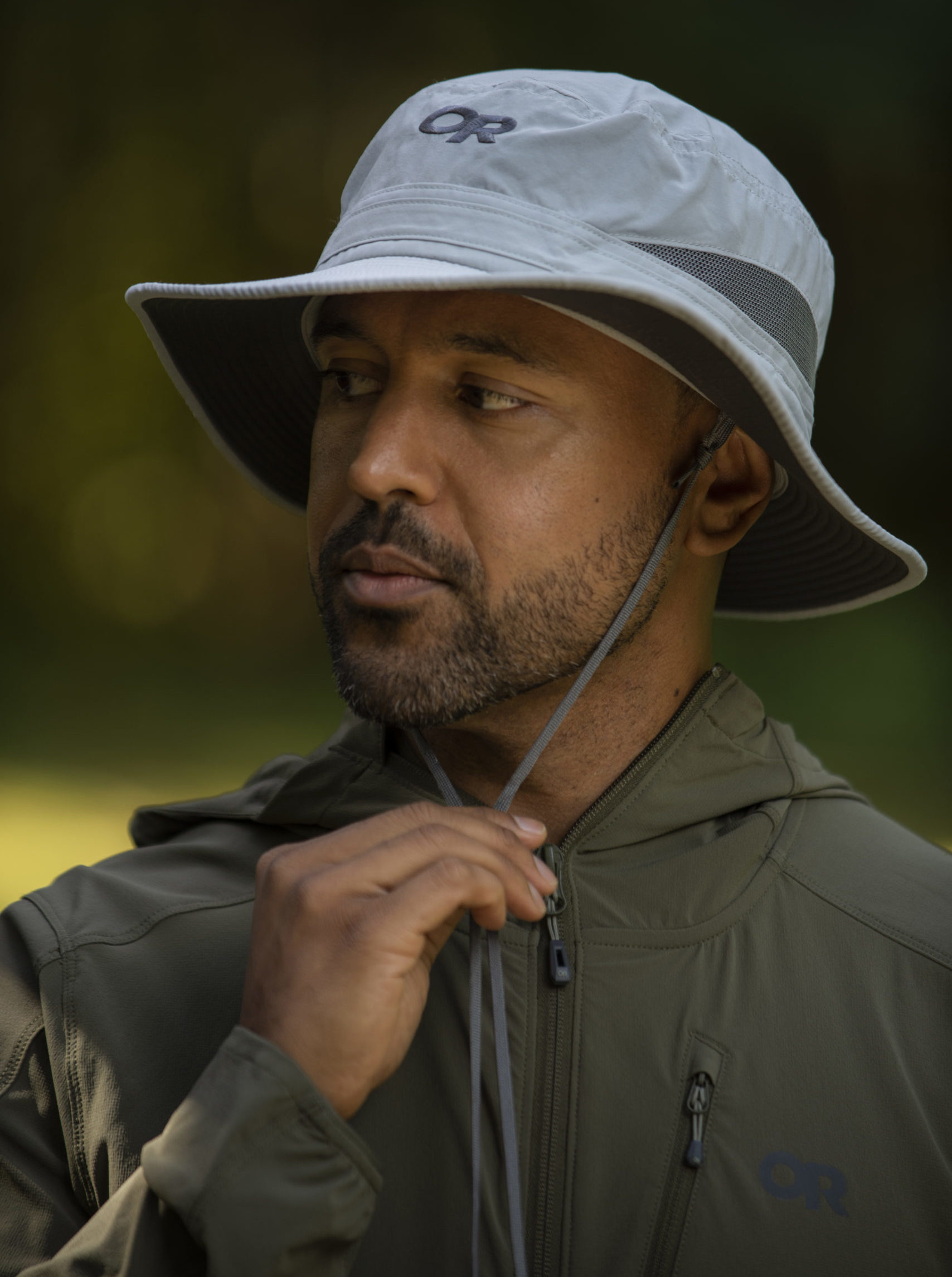
The experience of Mozzie Style jackets and pants is like wearing a portable screened-in porch. The jackets and pants are made of fine mesh that is highly breathable, but with holes too small for bugs to penetrate. Simply designed, lightweight, made from recycled polyester, the pieces provide a physical, insecticide-free barrier that has been tested by Oklahoma State University and found to significantly reduce the number of bites. Similar to a long-sleeved shirt, but cooler and more comfortable in warm weather.
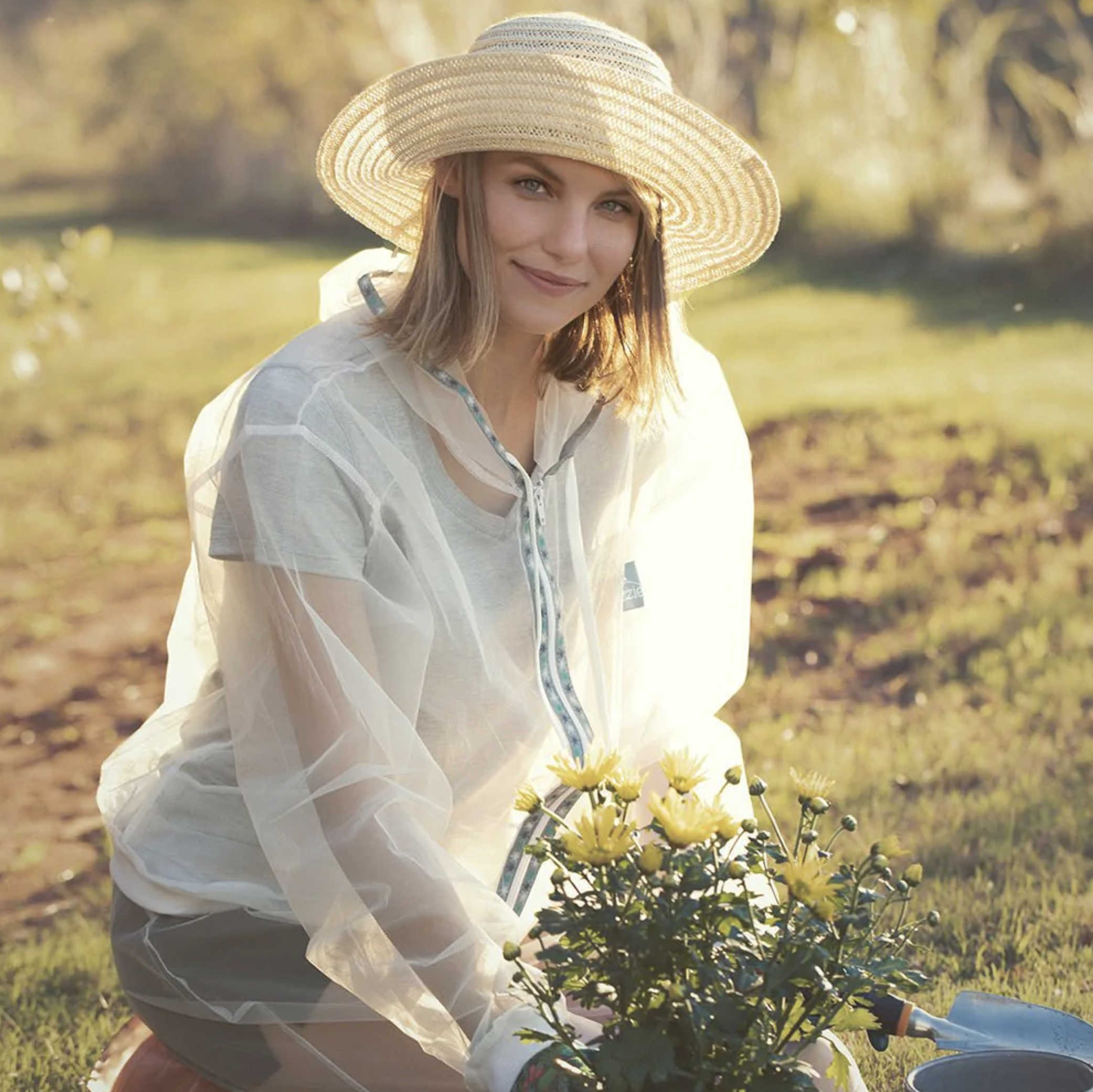
The post Bugs Be Gone appeared first on Organic Spa Magazine.











I’M WEARING >> PANTS: ZARA (SIMILAR) | TEE: WEEKDAY MEN | SWEATSHIRT: IETS FRANS | SHOES: CONVERSE | BAG: COACH | COAT: VINTAGE | EARRINGS: ZARA
So how do you introduce colour into your look if you are stuck on black and white?
I am the first to admit that if I could, I would probably wear black all the time. Maybe black and white. However, adding colour is so fun specially during the winter because its unexpected but since that ship has sailed and were kind of in the “middle” of Spring, here is a good tip to introduce colour to your wardrobe.
If you love your black and white looks but rarely dare into colour, a good way to start introducing it is adding a pop of one colour unto a black and white look, an even more fun way to style that colour is adding not one but 2 pieces of that SAME shade into your look. Here I wore a bright green t-shirt and threw a sweatshirt over mi shoulders on a very similar colour (I would even argue its the same).
The weather in Amsterdam I still a bit up and down so styling the sweatshirt over my shoulders meant that I had it easily accessible if I needed an extra layer, but also, I happen to think it looks super cool over the shoulders, in fact, it reminds me of my school uniform days where out only way to showcase our personal style, was playing with elements of our uniform, so I used to throw my sweaters or sweatshirts over my shoulders all the time. The teachers often told me not to do it but hey, you can’t blame me for trying!
If you want to check more Inso on colourful looks, check this, this and this!






I’M WEARING >> Newsprint Pants: Reformation | Sweatshirt: Storets | Shoes: Senso | Bag: Gucci | Sunnies: Celine
I recently received these Reformation newsprint pants and I a super hooked. In all honestly, sporty clothes have been my go to since the pandemic and it has been quite hard to snap out of that, so wearing these trousers feels like a true update.
These are quite a statement but what I love about them is that they are actually quite easy to style, in fact, I just launched a styling series on my Instagram Reels where I styled these pants in 3 different ways if you are interested. You can watch it HERE and dont forget to check my fireplace makeover HERE.











Last Friday the 11th of February, we finally officially married at a very small and intimate civil wedding ceremony in Amsterdam’s courthouse.
We had obviously already had our big wedding in Mexico but it was only a religious ceremony and the legal marriage had to take part in The Netherlands. We waited for months because the waiting time for appointments at the courthouse were insanely long but last Friday it finally happened, so I guess we are now OFFICIALLY married and just in time for Valentines day haha.
This dress I wore is something that I was obsessed with the moment I saw it. the 80’s puff sleeves, the lace the covered buttons, the high neck, everything was so on point, so me.
I decided I wanted to have a headband with a birdcage veil but I couldn’t find anything I liked so yeah, you guessed it; I made it myself!

Model: Georgiy Soltanov
The weather may be gray and gloomy, but that doesn’t mean that your wardrobe needs to follow suit. We’ve assembled some great-looking jackets, vests and coats that will not only keep you stylish and sustainable, but also protected against these continual bone-chilling temperatures.
Puffer
Don’t be fooled, the Otis P Puffer Jacket from Noize may look thin, but it has enough recycled filling to keep you warm and cozy all the way down to 23 degrees. Not bad for something you can roll up and stash in your backpack, or even tuck in your car’s glove compartment!
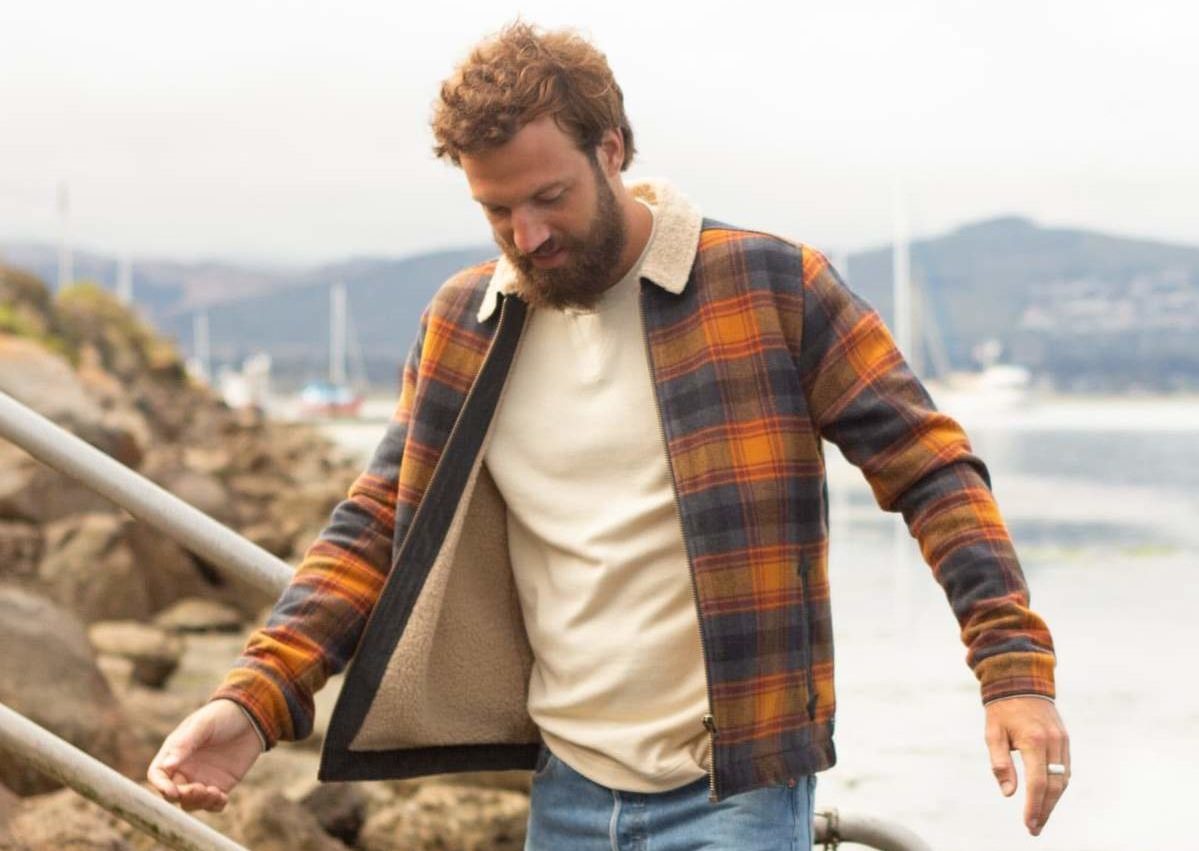
Pictured: Burntside Trucker Jacket, Toad&Co
Trucker Jacket
Trucker jackets walk a fine line between rugged and refined. This handsome fleece-lined Burntside Trucker Jacket from Toad&Co is best worn while enjoying hot chocolate by the campfire—whether that’s in your backyard or at an actual camp.
Parka
If a parka is good enough for indigenous people fending off the frigid Arctic, it can just as easily protect you from the elements for the next few months. This bomber-parka hybrid, Nixon from Noize, is equipped with a vegan plush lined collar, a storm placket, and a detachable hood.
Overshirt
Layered sportswear pieces—a knit Tee, a pair of joggers and a thin overshirt—should be your uniform for lazy Sundays or whenever you feel like taking it easy. The Foraker Button-Down and Jackpot Jogger from Corbeaux Clothing, Rufus Knit from Poler, and Oxford Crew Light Socks from Darn Tough should do the trick!
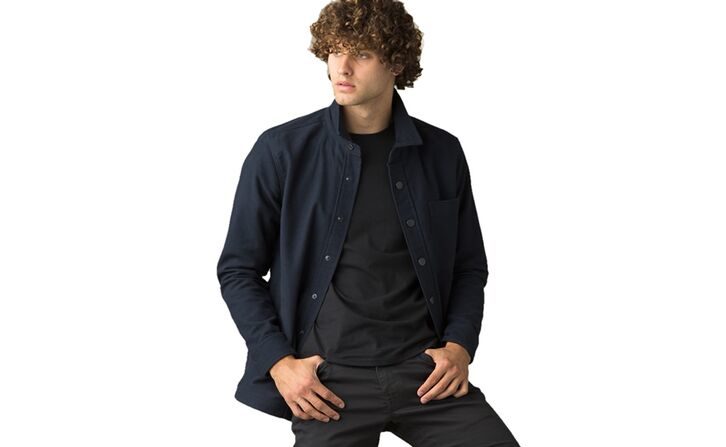
Pictured: Wild Rogue Jacket, Prana
Shirt Jacket
Turn up the chic quotient of any shirt-and-pants combo by opting for a simple polished shirt jacket. The Wild Rogue Jacket from Prana is outfitted with clean lines and snap buttons which ensure that it will never lose its contemporary appeal. Additionally, it’s made of 100 percent organic cotton moleskin fabric, which will keep you stylish and comfortable all day long.
Anorak
When the day doesn’t forecast snow and threatens a downpour instead, reach for the Precip Eco Anorak from Marmot, an ultralight waterproof anorak made of 100 percent recycled nylon ripstop.
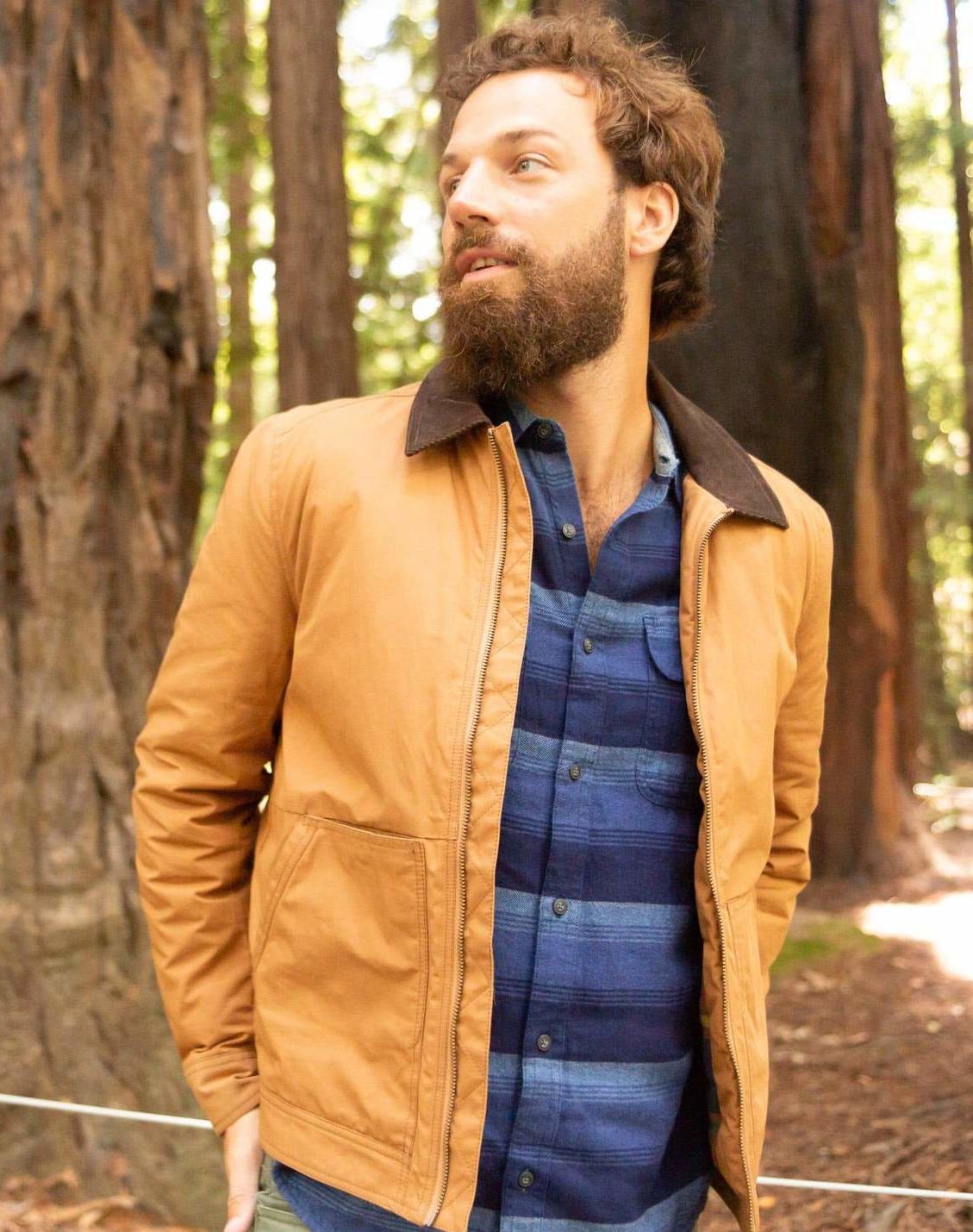
Pictured: McWay Trucker Jacket, Toad&Co
Waxed Jacket
Waxed jackets are as utilitarian now as they were during the 15th century, when it’s said that mariners would smear grease on fabric to make them weatherproof. The McWay Trucker Jacket from Toad&Co combines the utility of yesteryear with the style of today. A historically rural piece of outerwear — they’re a staple with outdoor pursuits like fishing and hunting — waxed jackets also feel right at home with a polo and a pair of dark denims, such as the Follow Through Long Sleeve Shirt and Wingman Denim Lean from Toad&Co.
Vest
Channel a preppy vibe by layering a long-sleeved tee, or a sweater, with a structured vest. Poler’s Bishop Sleeveless Jacket is everything you’d look for in a functional vest and more. Finish the look with a knit scarf if you require an extra level of warmth.
The post Sustainable Men’s Outerwear appeared first on Organic Spa Magazine.
When Clarissa Egaña became pregnant, she started to pay attention to sustainability. She had previously overseen a swimwear brand, Bamboo Mare, but wanted to create something that was safe for people’s health and the planet. That’s how Port de Bras, an ethical athleisure line, was born.
“I believe that overall health has to do with physical and spiritual alignment,” says Egaña, the founder and designer of Port de Bras. “Dressing is part of our everyday choices and being conscious about these things makes us be in the now and in unison with the world. Choosing clothing that is ethical, toxin-free, eco-friendly and positively impacting society will definitely empower you to keep making better choices altogether.”
Though Egaña had been living and working in the U.S. for over 10 years, she decided to return to her native Caracas, Venezuela, to launch Port de Bras. “I fell in love with the process of helping so many people who needed it very badly and we finally moved to set up our own atelier and change our team’s lives in the process,” she says.
“Port de Bras is sustainable in many ways beside the fact that the product is very high quality, eco-friendly and adds to a smart, timeless closet that allows you to reduce your shopping needs. We aim not to create less negative impact, but to create more positive impact. That means employing where it is most needed and financing sewing machines for a team of women instead of paying low wages to use your own machinery; donating your scraps so other women can make doll clothes, bows and other things they can sell and make money; supporting local charities; donating face masks during a pandemic; teaching a trade; making people feel safe and valued; and creating a sense of belonging and security inyour industry.”
Port de Bras exclusively works with nontoxic fabrics, specifically biodegradable polyamide, which is a new technology. “We chose this because we focus on bringing the opposite of what big brands offer—a real, well-thought, transparent and sustainable option women can actually relate to,” Egaña says. The brand has a zero-waste policy.
The clothes are designed to be worn both in and out of the gym. “I like our pieces to be feminine and flattering but I also design very relaxed and oversized pieces to style them with, which is something to do with the classic rehearsal ballerina style,” Egaña says. The line’s name comes from the French ballet term for the movement of the arms. “I found it to be feminine and timeless like the brand I envisioned and also meaningful as we aim to become a movement in fashion!”
“We want to see Port de Bras continue to grow organically among the community that choses it over big brands because of what it stands for. That’s the biggest goal, to keep connecting to conscious minds and impact those who make everyday choices, to make better ones day by day.” portdebras.com

The post Ethical Designs: Port de Bras appeared first on Organic Spa Magazine.